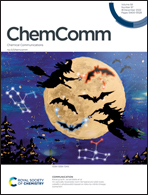Recent advances in eco-friendly fabrics with special wettability for oil/water separation
Abstract
Considering the serious damage to aquatic ecosystems and marine life caused by oil spills and oily wastewater discharge, efficient, environment-friendly and sustainable oil/water separation technology has become an inevitable trend for current development. Herein, fabrics are recognized as eco-friendly materials for water treatment due to their good degradability and low cost. Particularly, fabrics with rough structures and natural hydrophilicity/oleophilicity enable the construction of superwetting surfaces for the selective separation of oil/water mixtures and even complex emulsions. Therefore, superwetting fabrics for efficiently solving oil spills and purifying oily wastewater have received extensive attention. Especially, Janus and smart fabrics are highly anticipated to enable the on-demand and sustainable treatment of oil spills and oily wastewater due to their changeable wettability. Moreover, the fabrication of superwetting fabrics with multifunctional performances for oily wastewater purification can further promote their practical industrial applications, such as photocatalytic, self-cleaning, and self-healing characteristics. However, some potential challenges still exist, which urgently need to be systematically summarized to guide the future development of this research field. In this review, firstly, the fundamental theories of wettability and the separation mechanisms based on special wettability are discussed. Then, superwetting fabrics for efficient oil/water separation are systematically reviewed, such as superhydrophobic/superoleophilic (SHB/SOL), superhydrophilic/superoleophobic (SHL/SOB), SHL/underwater superoleophobic (SHL/UWSOB), and UWSOB/underoil superoleophobic (UWSOB/UOSHB) fabrics. Most importantly, we highlight Janus, smart, and multifunctional fabrics based on their superwetting property. Correspondingly, the advantages and disadvantages of each superwetting fabric are comprehensively analyzed. Besides, super-antiwetting fabrics with superhydrophobic/superoleophobic (SHB/SOB) property are also introduced. Finally, the challenges and future research directions are explained.



 Please wait while we load your content...
Please wait while we load your content...